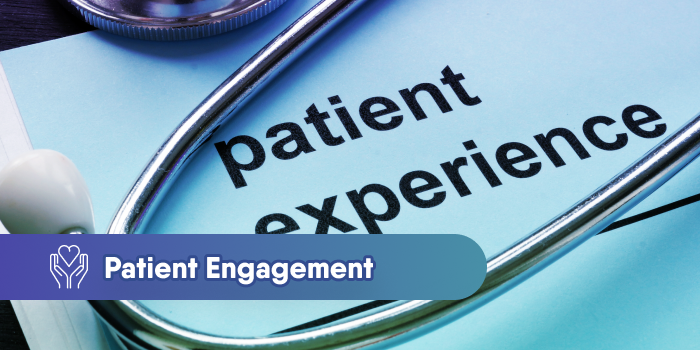How Telehealth Enhances Patient Engagement
Telehealth enables patients to be more engaged with their healthcare providers as it provides them easier access and greater convenience to care.

Happy and satisfied patients are the heart and soul of any practice. It’s the reason why patients refer their healthcare providers to friends, family members, and even colleagues. Satisfied patients are more likely to stay loyal to their healthcare provider, show up for appointments, and adhere to a care plan. Creating the ultimate patient experience brings new patients in and retains existing patients.
Nowadays, patients are aware of the diverse choices available in healthcare. With innovative software solutions and the internet now involved in healthcare, like telemedicine and online reviews, maintaining current patients can still be a challenge if you don’t offer them what they need.
A recent survey notes that “81 percent of consumers will still check out a doctor online despite being given a strong referral from their primary care doctor.” That shows how patients increasingly are relying on online reviews to find which healthcare provider best suits their needs and concerns.
For this reason, it’s vital to create a patient-friendly website that shows important information and the services your practice provides. It’s best to also include the credentials you have, contact information, even frequently asked questions, and patient testimonials.
In addition, many healthcare providers are opting into telemedicine to solve health care problems and improve the access of patients to quality care. A Software Advice study indicates that 75% of patients had interest in telemedicine.
It takes hard work and a good strategy to achieve a long-lasting positive impact on your patients, but there are easy and effective ways to achieve it.
Look at the following 10 suggestions to create the ultimate patient experience.
This is a no-brainer. In every healthcare organization, all physicians should build relationships with their patients as part of the quality of care they provide. Connecting with your patients ultimately builds confidence and satisfaction with your care. The following are key points to remember on how you can effectively build loyal relationships with your patients:
Take time to get to know your patients. They know how busy doctors are, but if you show that regardless of your busy schedule, you take the time to acknowledge them, it makes them realize you’re different from other physicians they know; when they need you, they won’t be rushed through an appointment.
Ask your patients more open-ended questions to gauge patient satisfaction. This is crucial because it shows that you care for them and you want to know how you can improve your service to them.
If you feel like your patient is too shy to ask about their concerns, be the first one to approach them and encourage them to ask away. Some patients are nervous, so use a friendly approach. Once they open up, support them to guarantee they won’t hesitate to ask the next time. This is an effective way to create an ultimate patient experience — leaving no unanswered questions.
Not everyone is confident enough to be up-front about their health concerns. Anticipate what your patients need and be the first to address certain topics. Your patients will be happy to know that you’re looking out for them and understand them.
First and foremost, explain the situation and other information to your patients in layman’s terms. Not every patient can grasp technical terms and understand them quickly. Second, educate your patients with information about the symptoms of their condition, especially the signs that require immediate treatment. And lastly, always be certain that your patients understand the medications you prescribe to them. Make sure that they fully understand when to take their medications and how they should take them.
Teaching patients is a pivotal aspect of any healthcare. It needs to be comprehensive. Guide your patients and help them understand what they need to do with the information provided to them.
Integrate a patient-friendly appointment scheduling software into your system, so that your patients don’t have to wait on hold or experience unanswered calls — which can only frustrate them. It’s more convenient for potential patients to choose healthcare providers that offer the ability to change, cancel, and schedule an appointment online or via text message, as well — current patients appreciate the convenience, too.
To accomplish this, get a telemedicine software provider; Curogram offers HIPAA-compliant appointment reminders and online appointment booking.
“You never get a second chance to make a first impression.” You’re probably familiar with that phrase. If you’re having a rough day, don’t let it affect you when you’re about to face a patient. Even if you’re doing a virtual visit, your patient might get the feeling that you’re not fully engaged. It’s important to put your personal issues and emotions aside and wear a smile when it’s time to meet a patient, new or old.
Making a good impression is a great opportunity for you to instantly create the ultimate patient experience for a patient who consults with you for the first time, so make it count.
Create a warmer relationship with your patients by asking them how their day is going. Create a bond and make them feel important. If they respond with a certain event happening, you can ask about that event the next time they consult with you. Your patient might even find it touching that you remember what they said, like you’re a close friend of theirs.
Another thoughtful gesture you can do is to follow up with your patients. Whether it prompts the patient to address some minor concerns about their medication or treatment or not, it’s still nice to reach out to check on how they are feeling. That creates a good impression about you and may lead the patient to refer you to their close friends and family members.
Send surveys to patients immediately after their appointments to gauge patient satisfaction. It’s an effective method to know where your strong areas are and areas where you need improvement. If you make improvements, your patients appreciate it and welcome consulting and communicating with you again.
This is also a terrific way to ask if your patient had any difficulty with scheduling their appointments or if they fully understand their health information. Asking for feedback improves the quality of care, therefore, creating an ultimate patient experience.
By following these 10 methods to create or improve the ultimate patient experience, you can build stronger bonds and long-term relationships. Patients don’t need a diagnosis alone. They’re human beings and need empathy and attention, especially those who need help.
As you create the ultimate patient experience, you discover the positive impact it has on your patients and organization.
The patient experience represents a pivotal element of your ability to retain and attract patients. When the patients are happy and satisfied with the service you provide for them, that forms a positive relationship where they develop loyalty and a deeper connection to you.
Understanding the patient experience is critical to any healthcare provider. It is more than just providing impressive care. The patients who experience better care often have better patient experience.
For instance, 58% of survey respondents said it is either ‘very important’ or ‘somewhat important’ that their primary care doctor offers virtual care options. Majority of the respondents prefer the care being provided virtually — experiencing a positive outcome through remote care.
When you provide outstanding care, your efforts positively impact a patient’s life. That makes them happy and you as well, knowing that your work is meaningful. And a large part of that is effective communication.
It’s simple, the easier and more convenient the communication is, the better the patient experience. Patients communicate with their physicians about medical concerns, and providers must respond to their concerns with relevant information that they can easily understand.
Consistent, effective communication makes sure that the patient receives the right and accurate information about their condition or treatment. By working on your communication, you can build positive patient relationships. Always make sure to:
An effective healthcare communicator makes their patients feel cared for and valued, further impacting the patient's satisfaction. Tools are helpful as well.
There are plenty of ways utilizing the right tools can affect patient experience. For instance, if the patient finds trouble reaching out to their physicians, that creates frustration, which ultimately leads to switching to another healthcare provider. We all know that healthcare providers want to avoid that kind of scenario.
The best thing a healthcare provider can do is to expand their resources. Integrating healthcare software into your system can help your patients reach you without experiencing any difficulties. Some of the useful software you can obtain includes:
Your goal is to create a positive patient experience. These tools may bring benefits that can attract more patients because of how innovative your organization is. Many patients today look for healthcare providers that have easy access to tools they can use. But even with these tools, virtual visits are essential.
Because of the COVID-19 pandemic, telehealth is on the rise as 77% of patients would consider remote care. Telehealth can help enhance patient satisfaction, reduce wait times, and increase patient volumes.
Telehealth also has the power to save patients valuable time and money because it does away with traveling to appointments, the need for child care, or taking time off work; it’s especially beneficial for patients who live in rural areas. The ease that the virtual consultation gives to patients is what makes them choose this method. Knowing the needs of your patients makes them more satisfied with your care. By offering telehealth, you help them and they help you by sharing positive reviews.
Positive reviews can have a significant impact on the online reputation of healthcare organizations. Not only does it attract potential patients, but it also builds great positive patient experience.
Patient experience is the lifeblood of any healthcare provider, and your online reputation is a major factor for bringing more patients and establishing your practice as a trusted healthcare provider.
When potential patients see bad reviews and feedback from your past patients, that can drive them away to choose another provider. Having a positive online reputation on the other hand attracts more patients because they see how good your services are based on the previous patients’ feedback, which they then presume means they will have an enhanced patient experience.
It’s indeed better than having no online reviews at all. If you want to know how you can integrate automated survey and rating requests into your system, contact Curogram today for a quick demo.
Online reputation can help healthcare providers, but it is better to understand more of what your patients need to secure positive feedback from them. By learning how to connect with your patients, you will be able to improve your practice and retain more patients along the way.
A study from a research team of Thomas Jefferson University shows that physicians with stronger empathy have a higher success rate when treating diabetic patients. It also notes that a physician's empathy is an important factor associated with clinical competence.
Strengthening the emotional connection to patients is part of creating an ultimate patient experience. Here are four simple ways to achieve that:
Nobody wants to have their time wasted from waiting. Sincerely apologize to your patients if they happen to wait longer than they should — that shows how you value their time and that you care.
The best way to break the tension is to start the conversation with an ice-breaker. That can be helpful to relax the tension. You may ask something unusual, out of the blue yet, a question that can lighten the ambiance. For example, “What talent or accomplishment would you most want to become famous for?” The questions may be irrelevant, but it can lessen the patient’s worries from their concerns and connect with you more.
Provide personal warmth to your patients; treat them nicely, as you would want to be treated.
It is thoughtful when physicians ask their patients about their mental and emotional state. It shows how they care for them and the eagerness to help their patients. That can mean so much to them, especially for people with chronic pain. Developing a good relationship with them can go a long way.
Change in technology is inevitable, but quality of care should be consistent. It’s time to embrace innovation and build relationships to improve the patient experience through telemedicine. Having consistent years of top-notch healthcare service requires not just alleviating a patient’s concerns. It’s also about prioritizing the quality of care, regular check-ins, and helping them lessen the difficulty of reaching out to you, their healthcare provider. Your patients will be very happy if their experience with you isn’t difficult and if they feel valued during every step of the process.
Another tip for a way to widen your relationship with your patients is to stay in touch with them even if they have not consulted with you for a short while. Ask about how they’re doing, about their health, and if they are still taking their medication. Reframe the patient experience by going patient-centric — give attention even if they are not currently consulting with you to show them that you have a certain level of care in your organization.

Telehealth enables patients to be more engaged with their healthcare providers as it provides them easier access and greater convenience to care.

Physicians and other healthcare providers have always been concerned with the well-being of their patients. While satisfaction contributes to patient...

Communication is the key to any great organization. How healthcare practice’s internally communicate and externally communicate with their patients...